
Fabian Anthony Forte, professionally known as Fabian, is an American singer and actor.

American International Pictures is an American motion picture production label of Metro-Goldwyn-Mayer, owned by Amazon MGM Studios. In its original operating period, AIP was an independent film production and distribution company known for producing and releasing films from 1955 until 1980, a year after its acquisition by Filmways in 1979.
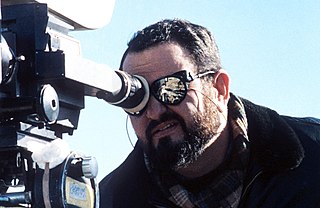
John Frederick Milius is an American screenwriter, film director, and producer. He was a writer for the first two Dirty Harry films, received an Academy Award nomination as screenwriter of Apocalypse Now (1979), and wrote and directed The Wind and the Lion (1975), Conan the Barbarian (1982), and Red Dawn (1984). He later served as the co-creator of the Primetime Emmy Award-winning television series Rome (2005–2007).

Shout at the Devil is a 1976 British war adventure film directed by Peter R. Hunt and starring Lee Marvin and Roger Moore. The film, set in Zanzibar and German East Africa in 1913–1915, is based on a novel by Wilbur Smith which is very loosely inspired by real events. The supporting cast features Barbara Parkins and Ian Holm.

Farewell to the King is a 1989 American action adventure drama film written and directed by John Milius. It stars Nick Nolte, Nigel Havers, Frank McRae, and Gerry Lopez and is loosely based on the 1969 novel L'Adieu au Roi by Pierre Schoendoerffer. Longtime Milius collaborator Basil Poledouris composed the musical score.

Dillinger is a 1973 American gangster film about the life and criminal exploits of notorious bank robber John Dillinger. It stars Warren Oates as Dillinger, Ben Johnson as his pursuer, FBI Agent Melvin Purvis, and Cloris Leachman as the "Lady in Red" who made it possible for Purvis to kill Dillinger. It also features the first film performance by the singer Michelle Phillips as Dillinger's moll Billie Frechette. The film, narrated by Purvis, chronicles the last few years of Dillinger's life as the FBI and law enforcement closed in. The setting is Depression era America, from 1933 to 1934, with largely unromanticized depictions of the principal characters. It was written and directed by John Milius for Samuel Z. Arkoff's American International Pictures.

Ghost in the Invisible Bikini is a 1966 American fantasy comedy film. It is the seventh and last of American International Pictures' beach party films. The film features the cast cavorting in and around a haunted house and the adjacent swimming pool.

Dr. Goldfoot and the Girl Bombs is a 1966 Eurospy comedy film, made in Technicolor and directed by Mario Bava. Serving as a sequel to two unrelated films, Dr. Goldfoot and the Bikini Machine and Two Mafiosi Against Goldginger, the film stars Vincent Price, Fabian, Francesco Mulé, Laura Antonelli, and the Italian comic duo Franco and Ciccio.

Flight of the Intruder is a 1991 war film directed by John Milius, and starring Danny Glover, Willem Dafoe, and Brad Johnson. It is based on the novel of the same name by former Grumman A-6 Intruder pilot Stephen Coonts. The film received negative reviews upon release, and was Milius's final theatrical release as a director.

Jules Verne's Rocket to the Moon is a 1967 Eastman color British science fiction comedy film directed by Don Sharp and starring Burl Ives, Troy Donahue, Gert Fröbe and Terry-Thomas.

The Life and Times of Judge Roy Bean is a 1972 American Western comedy film written by John Milius, directed by John Huston, and starring Paul Newman. It was loosely based on the life and times of Judge Roy Bean.
Burt Topper was an American film director and screenwriter best known for cult films aimed at teenagers.
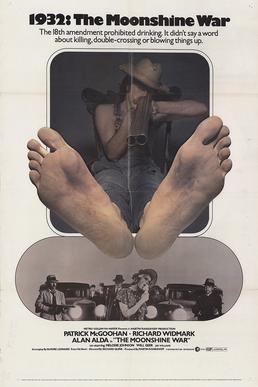
The Moonshine War is a 1970 American crime comedy-drama film directed by Richard Quine, based on the 1969 novel of the same name by Elmore Leonard. It stars Patrick McGoohan, Richard Widmark, Alan Alda, and Will Geer.

Wuthering Heights is a 1970 British drama film directed by Robert Fuest and starring Anna Calder-Marshall and Timothy Dalton. It is based on the classic 1847 Emily Brontë novel of the same name. Like the 1939 version, it depicts only the first sixteen chapters, concluding with Catherine Earnshaw Linton's death, and omits the trials of her daughter, Hindley's son, and Heathcliff's son.
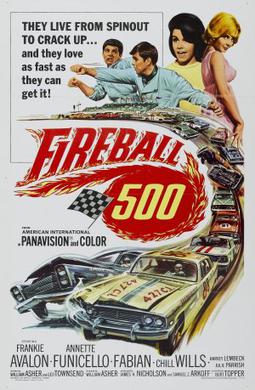
Fireball 500 is a 1966 stock car racing film, blended with the beach party film genre. A vehicle for stars Frankie Avalon, Annette Funicello, and Fabian, it was one of a string of similar racing films from the 1960s. Written by William Asher and Leo Townsend, and directed by William Asher, it tells the story of Dave Owens (Avalon), a stock car racer forced to run moonshine.

Evel Knievel is a 1971 American biographical film starring George Hamilton as motorcycle daredevil Evel Knievel.
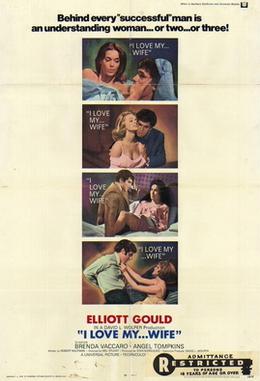
I Love My Wife, stylized as I Love My...Wife, is a 1970 American comedy film directed by Mel Stuart. It stars Elliott Gould and Brenda Vaccaro.
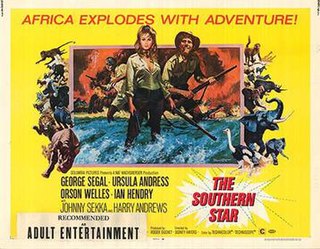
The Southern Star is a 1969 adventure comedy film directed by Sidney Hayers and starring George Segal, Ursula Andress, Orson Welles, Ian Hendry and Johnny Sekka. In French West Africa in 1912, an extremely valuable diamond is stolen.
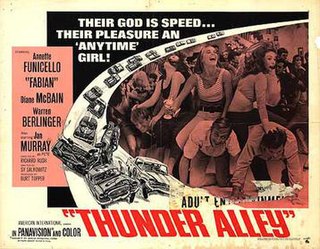
Thunder Alley is a 1967 film about auto racing directed by Richard Rush and starring Annette Funicello and Fabian Forte. It was released by American International Pictures.

A Bullet for Pretty Boy is a 1970 American action film from director Larry Buchanan. It stars Fabian Forte as gangster Pretty Boy Floyd and co-stars Jocelyn Lane in her final performance before retiring from acting in 1971.



















